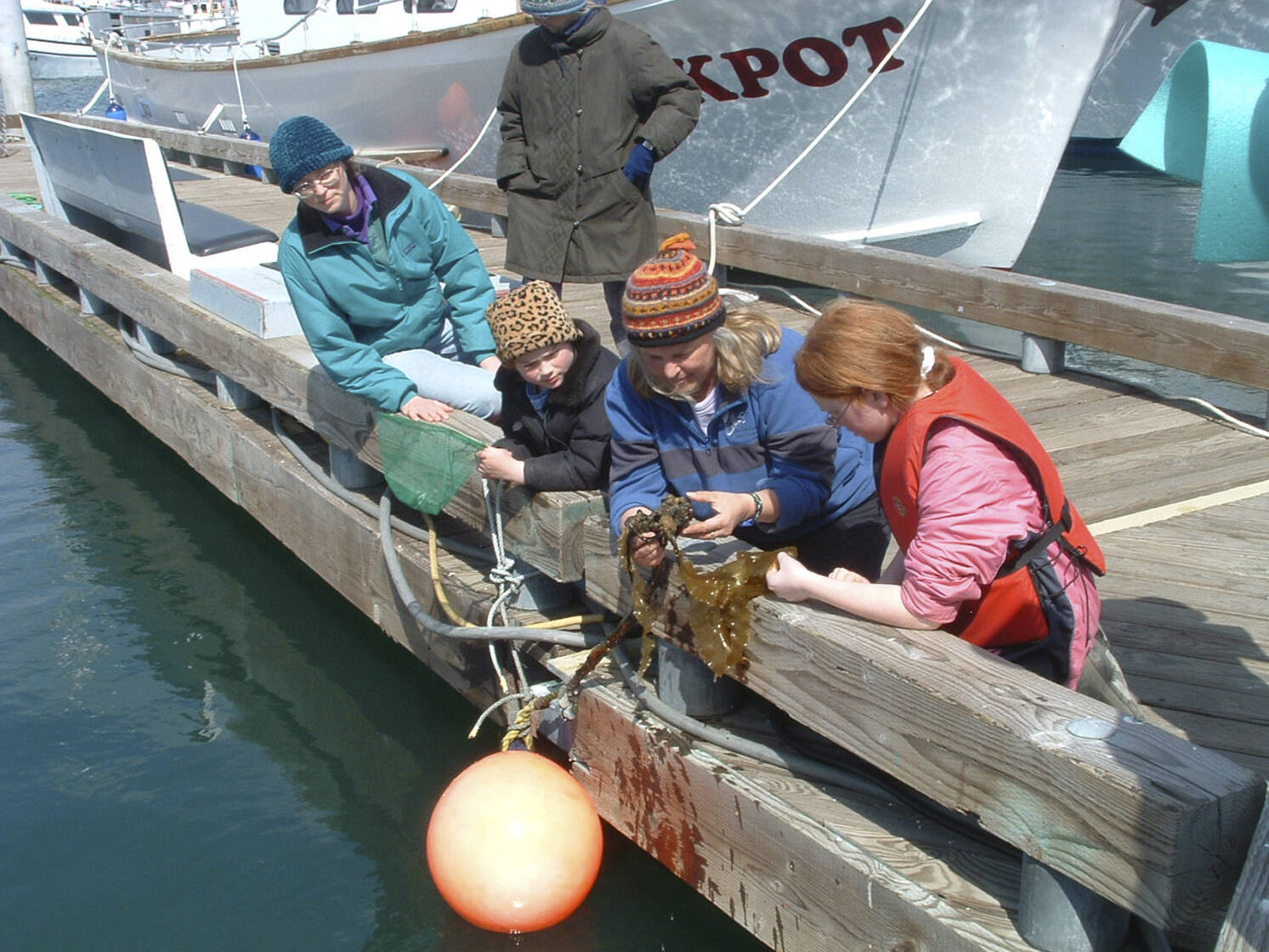Editor’s note: The story of the Center for Alaskan Coastal Studies continues in the latest of a series of stories. This week’s story looks at its third decade from 2002-2012.
During its third decade, the Center for Alaskan Coastal Studies adapted its operations and educational focus to the rapid ecological changes happening in Kachemak Bay and the Gulf of Alaska. The recovery of the marine environment from the 1989 Exxon Valdez oil spill (EVOS) continued throughout this decade, but the effects of accelerated global climate change began to manifest locally.
The fall of spruce trees toppled by the gnawings of spruce bark beetles shifted the forest ecosystems in Peterson Bay and at the Wynn Nature into early successional stages. Dungeness crabs disappeared from the crab pots set before each oceanography field trip, and bristly crab larvae became scarce in plankton tows. The number of flat-bottomed sea stars exploded some years in Peterson and China Poot Bays while other sea star species became uncommon or rare.
The entrance to the slough where the floating dock was anchored in Peterson Bay began silting in as the Wosnesenki Glacier melted faster. The loading of people and gear on the Field Station dock had to be carefully timed, mindful of tidal and boat flotation physics.
Onboard and school field trips “across the Bay” continued, thanks to the magic of Fran and Jack Montgomery’s brightly-colored Rainbow Connection. Later in the decade, the Discovery, captained by Tim Cashman Jr., became the floating school bus to the Field Station and also to CACS-led programs at the NOAA/UAF Lab in Kasitsna Bay. Water taxi operators Mako Haggerty, Karl Stoltzfus, Tom Hopkins and the late Marsha Million, and kayak business partners Scott Burbank and Susan Aramovich, went “above and beyond,” transporting not only people, but also hauling lumber and supplies and providing their boat handling skills during the nail-biting high-tide journey of the floating dock back and forth from its winter resting place.
Guided hikes became daily offerings and youth programs were offered on a weekly basis during the summer at the Wynn Nature Center. Generous donors supported the purchase and addition of 9 acres to the original 131, including a cabin for staff housing. A new trail ― the Billie Fischer Cottonwood Trail ― was developed with volunteer labor, ending in a spectacular view of the Bay from hand-crafted benches built to honor Toby Tyler.
Programming opportunities expanded with funding from the Rasmuson Foundation to create a CACS yurt empire. Lee and Jess Tenhoff made and helped erect five Nomad Shelter yurts at the Field Station, one at Wynn, and one on the Homer Spit on land whose use was donated by Nancy Hillstrand and Coal Point Seafoods. The yurt on the Spit became the base for popular “Creatures of the Dock” tours, also known as “belly-button biology” for the position of of participants as they laid on their stomachs to look at marine life.
Through grant-funded collaborations, the CACS became a regional leader in planning community involvement in oil spill education, outreach and coastal monitoring — with the support of the EVOS Trustee Council and a statewide leader in marine debris clean-ups and education for prevention supported by NOAA. The Coast Walk model was extended to other Alaska coastal communities via pass-through NOAA mini-grants to jump-start similar programs. Teacher training workshops and new and updated online coastal education curricula helped spread CACS’ effective educational strategy of experiential, place-based education.
Community and volunteer support remained crucial to CACS’ success in enabling thousands of people of all ages annually to “explore, connect, and protect” the environment year-round. Under the guidance of Kat Haber, Board President for much of the decade, fund-raising efforts blossomed, including a series of Otterly Decadent Marine Migrations, tide-dependent (sometimes alarmingly so) progressive dinners of oysters and other tasty courses donated by lodge owners.
At the CACS 25th anniversary celebration, CACS honored three “octopus octogenarians,” super-volunteers Daisy Lee Bitter, Toby Tyler, and Barbara Hill, all of whom had helped lay the foundation for further expansion in the following decade as Beth Trowbridge became the CACS Executive Director.


